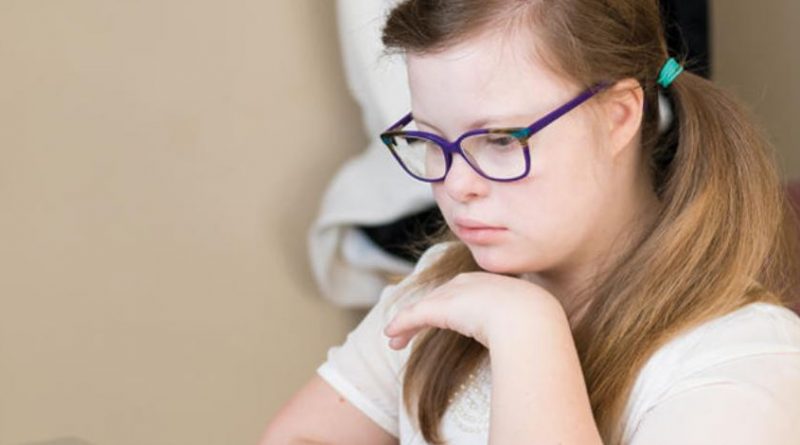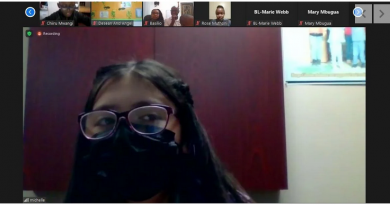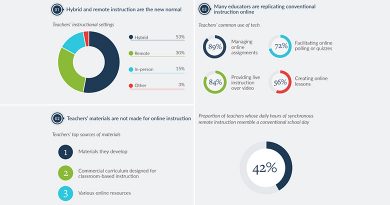How Have Educators Adapted Distance Learning for Special Education Students?
Teaching special education online has its own unique challenges, but teachers have found ways to use educational technology to aid students.
Special education instructors, like everyone else, turned to an array of digital tools and technologies to continue teaching in the wake of the pandemic. And while most would agree the shift to online learning came with serious challenges, many also found solutions that worked.
“This last year was a struggle — I won’t tell you it was not,” says Wendy Thompson, a special education teacher at New Jersey’s A. Harry Moore School. “That being said, we have seen success, and there are things out there that can help.”
Thompson, who is also president of the New Jersey Coalition for the Advancement of Assistive and Rehabilitation Technology, says the key is to ensure the tools educators use can be adapted to fit the needs of individual students. “It’s important to approach students where they are and provide them with options for how they can respond and show what they know and what they are learning.”
What Tools Have Special Educators Used for Online Learning?
Thompson’s own students at AHM will start hybrid learning in early May after more than a year of being fully remote. Her students generally have low-incidence disabilities, including speech, vision and cognitive impairments, and most require significant support throughout the learning process.
The most important tools in the school’s distance learning toolbox, Thompson notes, are the parents, siblings and other home-based caregivers who provide assistance to the students as needed. Daily classes are held on Zoom, which students log in to using a range of devices, including Chromebooks and tablets. Some students use a switch in place of the trackpad or mouse to control the cursor on their screen, while others rely on built-in assistive technologies, such as the speech-to-type function in Google Docs.
Outside of live class time, Thompson says, she and her colleagues have turned to the student engagement platform Seesaw to produce and post videos of lessons students can access individually. “On that,” she explains, “after they watch a lesson, they can respond in a way that works best for them.” If she’s posted a list of possible answers to a question and has asked the student to pick one, for example, they might click and drag it to a box on their screen, use their device to voice- or video-record their answer, or simply type their response in the appropriate space.
The educators’ other go-to technologies are similarly personalized to meet their students’ diverse needs. They use the online adaptive-phonics program Lalilo to help students with word recognition and comprehension, and they rely on a program called Happy Numbers to provide individualized math instruction. They also use the online tool Baamboozle, which breaks students into groups to play fun educational games, and they’ve turned to Boom Learning’s Boom Cards to give students customized activities they can complete to earn badges and other digital rewards.
“For us, gamification has been a great way to get everyone involved,” Thompson says. “But there are a lot of programs out there that work really well — they just have to be right for the people in your particular group.”
KEEP READING: Felisa Ford discusses Minecraft Education’s “Good Trouble” world.
What Does Special Education’s Future Hold?
Other teachers of children with special needs agree with Thompson on all counts: Online learning is best approached with strategies that give remote students the specific tools they need to succeed.
Laszlo Pokorny, who participated with Thompson and other New Jersey educators in a recent panel discussion titled “Technology and Special Education: Where Do We Go from Here?,” has taken this M.O. to heart. Just like Thompson, he’s big on gamified learning, which he uses with his students at Trenton’s Ninth Grade Academy.
As a teacher of special education science at the academy, which is part of Trenton Public Schools, Pokorny recommends the math and science games at Legends of Learning, and the science labs and simulators (called Gizmos) at ExploreLearning.
Compared with teaching in a traditional classroom environment, teaching special education students online requires more progress monitoring, more teacher-student conferencing “and more-frequent checks for understanding,” Pokorny says. Since the pandemic began, he’s come to rely on a suite of tools from GoGuardian that work well with his students’ district-issued Chromebooks.
GoGuardian’s digital solutions allow him to meet with his students one-on-one via chat or video, he explains. The platform gives him access to students’ screens, so he can “guide them through problems individually,” he says.
Before the pandemic, Pokorny notes, his urban school district had little to no budget for what he describes as “novel online learning programs and services.” Today, priorities have changed, and he and other teachers at Trenton’s Ninth Grade Academy are now adept at using these technologies to connect with students in ways that fit their strengths and needs.
64% The percentage of families with children in special education programs that offered synchronous online instruction during the pandemic who feel distance learning has been a success
As Pokorny looks ahead to his district’s transition to hybrid learning — and, eventually, in-person classes — he’s looking forward to the communication benefits of body language, tones and other signals one typically sees only in face-to-face interactions. But he also predicts that the tools he depends on now will continue to play an important role in his teaching in the future.
These technologies, Pokorny says, have been “a big win for all students,” including those with special needs. “They’ve thrust our district into the 21st century. I don’t think education will be the same again.”
Source: https://edtechmagazine.com/k12/article/2021/05/how-have-educators-adapted-distance-learning-special-education-students-perfcon





